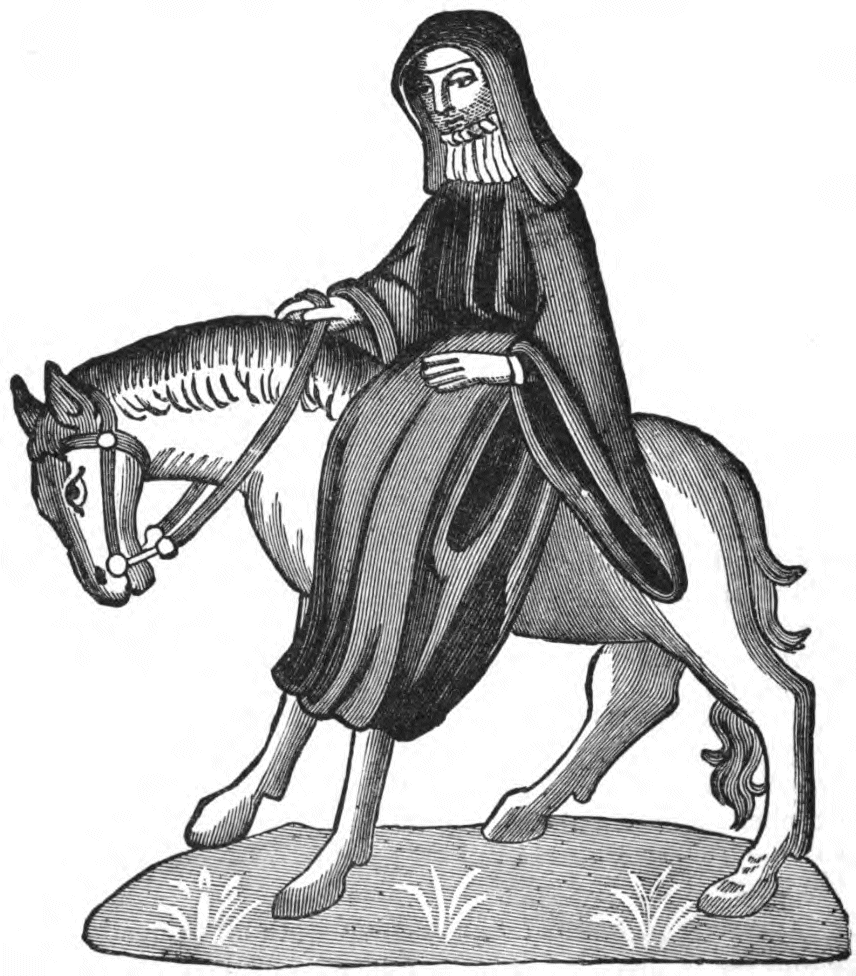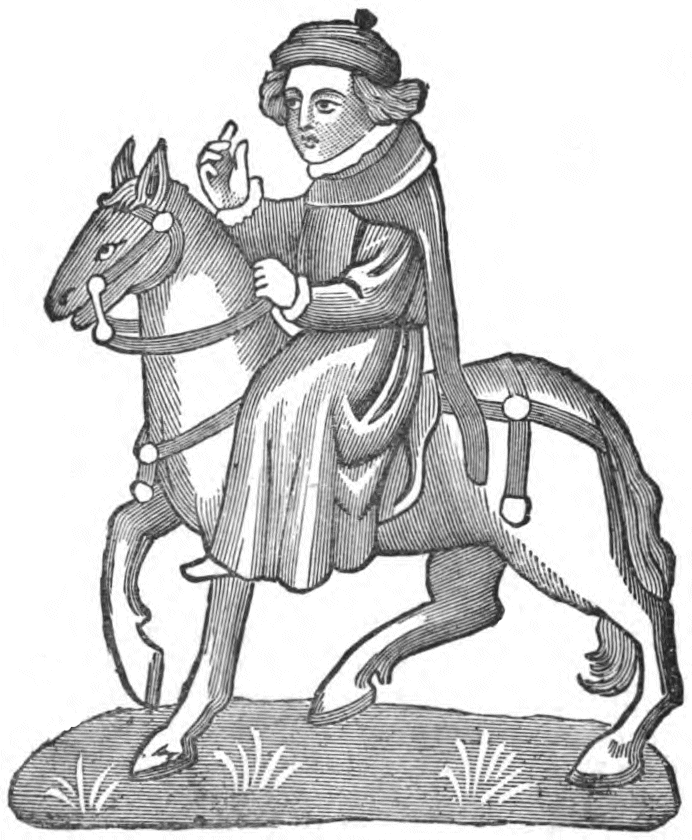

THE PRIORESS'S CHAPLAIN, OR SECOND NUN
'This Nun relates the history which is called in the Canterbury Tales the Second Nonnes Tale. There is accordingly in the manuscript a very neat miniature of her in a dark habit with open sleeves ; her wimple is nicely plaited; her hood or cowl is up, not hiding, however, her face; and her waist is girded' (Todd, op. cit. p. 235). As regards the statement that she was the Prioress's Chaplain the New Eng. Dict, explains 'chaplain' here as ' a nun who recites the inferior services in the chapel of a nunnery,' but the explanation seems of doubtful correctness and not to the point. Chaucer does not say that the nun was the chaplain of the Priory, but that she was the chaplain of the Prioress, and the duty of the chaplain of a Benedictine Prioress or Abbess is now, and presumably was then, to wait upon her Superior both in and out of chapel, just as the duty of a Bishop's chaplain is to attend on the Bishop. Such attendance would, of course, be more especially needed when the Prioress was travelling. Thus Bishop Alcock in his Abbaye of the Holy Ghost says that Charity was made an Abbess and to her Mercy and Truth were to be as Chaplains going about with her wherever she went. In the Customary of St. Augustine's Canterbury (edited by Sir E. M. Thompson for the Henry Bradshaw Society, 1902) there is an amusing section on the duties of an Abbot's two chaplains. Among these duties were to foster goodwill between the abbot and the monks, to accompany the abbot out of doors, to save him from small matters of business with which they could deal, to see to his housekeeping and especially to the supply of wine, to keep his jewels and see that he had always at least ten pounds in ready money, to distribute his alms and look after his guests. The same sort of duties would have to be performed in a nunnery, and obviously formed the business of the Prioress's Chaplain. In her Woman under Monasticism Miss Lina Eckenstein notes (pp. 376 so.) that' In consequence of an Episcopal visitation (1478) of the Benedictine convent of Easebourne injunctions were sent to the prioress, one of which directs that 'every week, beginning with the eldest she shall select for herself in due course and in turns one of her nuns as chaplain (capellanissam) for divine service and to wait upon herself (Blaauw, Episcopal Visitations of the Benedictine Nunnery at Easebourne, Sussex Arch. Collections, vo1. i. p. 15). 'In Redingfeld at the visitation of 1514, the complaint is made against the prioress that she does not change her chaplain' (Jessopp, Visitations of the Diocese of Norwich, 1492-1532, p. 138). The object of the weekly rota of chaplains was, no doubt, to prevent favouritism and jealousy.

THE NUN'S PRIEST
In the talks on the road, after the Monk's flow of tragedies had been stopped,
| "Thanne spak oure Hoost with rude speche and bold, And seyde unto the Nonnes Preest anon ' Come ner, thou preest, com hyder thou "Sir John." Telle us swich thyng as may oure hertes glade. Be blithe, though thou ryde upon a jade— What thogh thyn hors be bothe foule and lene? If he wol serve thee, rekke nat a bene,'" etc. (b 2998-4004.) |
This mention of ‘the Nonnes Priest' and the fact that the whole number of pilgrims is raised from twenty-nine (cp. 1. 24) to thirty-one, if there were three as here stated, suggests that Chaucer wrote this couplet in forgetfulness of his general scheme and omitted to reconcile them. It is the Priest who tells the story of the 'Fox and the Cock,' an excellent example of Chaucer's final style.
--o--
These notes are reproduced verbatim from Alfred W. Pollard, Chaucer's Canterbury Tales: The Prologue, London: Macmillan, 1903. The book is in the public domain and available for viewing and download from Google Books. Although the book is old, the notes are enlightening and accurate. Nevertheless, users doing detailed research on aspects of the General Prologue should, if possible, also consult more recent notes in print publications such as The Riverside Chaucer, ed. Larry D. Benson, 3rd ed., Boston: Houghton Mifflin, 1987.